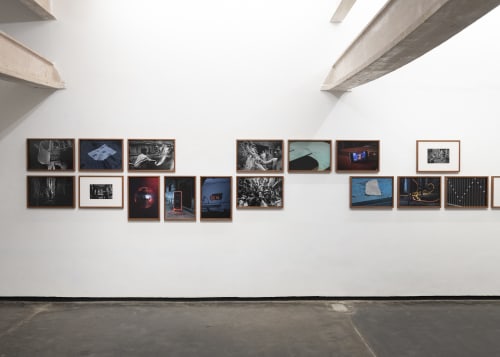Project 88 is pleased to present Kromosho, Munem Wasif's second solo exhibition at the gallery.
Kromosho, or "step by step" in Bengali, hints at an oeuvre developed gradually in close relationship with the city and the people inhabiting it. Composed across two decades, the bodies of work it displays rediscover various vantage points through which they portray the city's multiple idiosyncrasies. The exhibition overlaps fundamental transformations in both medium and subject: while the photographer's gaze on the city evolves over time, the city morphs in turn into increasing complexity.
The black and white series Belonging 2001-2013 portrays the city as the sole protagonist, where the public and the private overlap in a theatrical cadence. Fragmentary at first, depicting encounters that often seem contingent, the images slowly morph into a coherent whole infused with care and compassion. In Stereo, Wasif shifts his lens to the architecture of inanimate objects as encountered within the cityscape. Verging almost to the point of abstraction, these colored sets of diptychs and triptychs discuss various forms of uniformization.
Wasif describes the film Kheyal (2015-18) as a work between fact and fiction. The array of lives preluded in his earlier photographs of Puran Dhaka delineates into the psychological space of the four characters that make up the realm of the film. The staged, the framed, the scripted seamlessly blend here with the observed, contingent and perceived. Kheyal navigates between poles - that of conscious and subconscious, of arrival and departure, of prelude and interlude. Fictional, its characters are lost in certain mental states and yet they can be found inhabiting other imagined situations.
Wasif's photographs point to the presence of other, non-temporal and barely evidential epistemes - just as fragrances from Osman and the Fragrances, a series of colored prints. Seeing the range of works revolving around the city as individual projects in isolation would be deceptive and one should instead consider the body of works shown here as different steps of an intimate conversation, a long-held dialogue between the artist and his city which is gradually growing and expanding.


